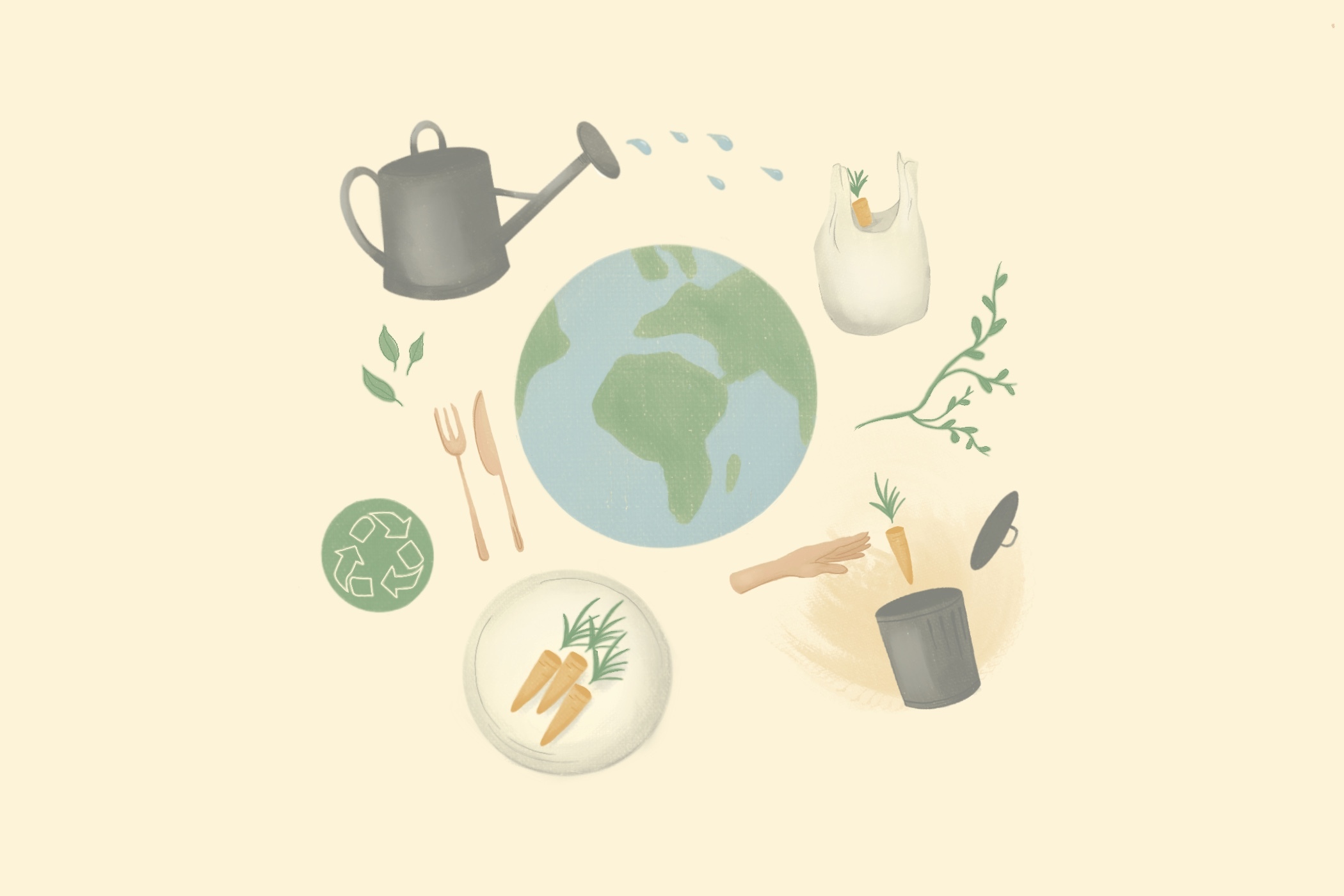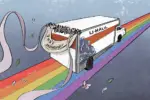Teetering piles of trash. Grime muddying up surfaces. An overwhelming stink in the air. This is not a scene from “Wall-E” — it is a reality that the U.S. may soon be facing. We are running out of space in our landfills. An article from 2018 argued that “the US is on pace to run out of room in landfills within 18 years.” U.S. companies have been shipping their plastic waste to China and other countries, but in 2018, China banned the import of plastic waste. At the beginning of 2020, Malaysia began returning illegal shipments of plastic from various wealthier countries, including the U.S. In the U.S., we need to face the realities of landfills instead of pushing our trash on other countries.
Our current linear supply chain is one of the reasons why our landfills are so full. Raw materials are sent to manufacturing plants, and used products and byproducts go straight to the landfills. In natural systems, there are no garbage piles — everything is continuously reused. To mimic nature, we need to follow a circular economy: diverting products and their manufacturing byproducts to other businesses and organizations. One entity’s output should become another entity’s input. As the saying goes, “One man’s garbage is another man’s treasure.”
Examples of a Circular Economy
A circular economy is already being implemented in some places. One large scale example is the Kalundborg Eco-Industrial Park. Also known as the Kalundborg Symbiosis, nine public and private companies work together and exchange heat, materials, water and energy, saving money and the environment. Unlike the cardboard to caviar project, this circular economy is a complex mass of various partnerships and networks.
The coal energy plant produces excess heat, steam, fly ash and sludge. But instead of letting these byproducts pollute the surrounding environment, they are all utilized. Excess heat is used by district heating, greenhouses and fish farms; steam is funneled to the nearby oil refinery and pharmaceutical plant; fly ash is used by a cement manufacturer; the sludge is taken by a wallboard plant. Then, the oil refinery produces wastewater and fuel, both of which are given to the coal plant.
The fuel is also used by various other plants that need it. Additionally, the oil refinery creates an excess of sulfur, which a nearby fertilizer manufacturer can use. Using the steam, the pharmaceutical plant has byproducts of yeast slurry and treated sludge, both of which can be given to farms to be used as fertilizer. The companies end up not needing to spend money to rid waste, the fish and fresh produce help local communities, and the environment can take a breather.
Circular economies do not have to be big ones like these examples. They can be small actions or partnerships. Composting leftover dinner scraps and using them for a garden is a “small” example. Starbucks offering free, leftover coffee grounds for gardens and compost bins is another, and so is The Real Dill company reusing their cucumber water to make a Bloody Mary mix.
Landfill waste takes up more than just space
The need for circular economies is more than just about saving space in landfills. It is also about reducing our carbon footprint and providing for our people. In 2010, landfills released about 882 million tons of carbon dioxide globally. The Washington Post claims that “if food waste were a country, it would be the world’s third-largest emitter of CO2, after China and the United States.” In the U.S. alone, we produce 63 million tons of food waste per year. Meanwhile, 40 million Americans are food insecure and the annual production of wasted food causes 37 million cars’ worth of greenhouse gas emissions. Instead of letting food waste exude methane, worsening the climate crisis, we could have used the excess food to feed hungry Americans — or if it cannot be eaten, to enrich our soils. Food waste makes up the largest portion of landfills in the U.S.
Just looking at various cities and counties that have published their landfill waste breakdowns, it is clear as day that we can do so much. For example, Denver, Colorado, found that 75% of their landfill materials could have been diverted: 50% were compostable and 25% were recyclable. Ohio’s Franklin County published similar findings. 76% of their landfill materials could have been composted and recycled.
Saving Resources
Earth Overshoot Day is the day each year that “marks the date when humanity’s demand for ecological resources and services in a given year exceeds what Earth can regenerate in that year.” In other words, we are currently stealing resources from our future. Earth Overshoot Day already passed for 2020 — it was Aug. 22. We need circular economies so that we do not have to spend unnecessary resources, time and energy to produce, discard and reproduce products. Thirty-seven million cars’ worth of wasted food was an incredible waste of water and energy, but using it well could have pushed back or avoided Earth Overshoot Day.
The Ellen MacArthur Foundation estimates that “the circular economy could result in a reduction of primary material consumption (i.e. car and construction materials, real estate land, synthetic fertilizer, pesticides, agricultural water use, fuels, and non-renewable electricity) by 32% by 2030.”
Tangible economic benefits of a circular economy
In addition to saving resources and reducing carbon emissions, a circular economy will also benefit national economies. Five-hundred billion dollars in health care costs associated with the food sector can be saved. In EU households, there can be a 3000 euro increase in annual disposable income. Seven-hundred million dollars in the fast-moving consumer goods industry can be saved annually. There are opportunities for new jobs. Manufacturing costs can be considerably lowered.
A circular economy would benefit us, the economy, and the environment. As consumers, we can buy products from companies that take action to reduce waste following a circular economy model. For example, Love Beauty and Planet uses recycled plastic for their bottles. As people, we can take a little more care in how we discard things, in order to ensure we don’t discard our future.

















